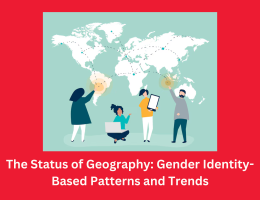
Economic geography: spatial distribution of economic activities and their implications
- By admin --
- Thursday, 07 Mar, 2024
Introduction:
The take a look at of the spatial distribution of economic hobby and its results on improvement, the surroundings, and society is known as monetary geography. It specializes in comprehending the factors that have an effect on the location of monetary pastime in addition to how and why they are organized geographically. This paper investigates the concept of monetary geography by means of looking at the spatial patterns of monetary pastime and the many outcomes that these patterns have on diverse groups and areas.
Understanding Economic Geography:
A extensive range of financial sports, along with the manufacturing, distribution, consumption, and alternate of services and products, are protected in the area of financial geography. It seems at how markets, transportation systems, industries, and concrete and rural communities are organized spatially. A quantity of variables, which include the supply of herbal sources, hard work supply, infrastructure, transportation costs, governmental regulations, and purchaser call for, affect economic hobby.
Spatial Distribution of Economic Activities:
A confluence of social, cultural, and economic variables shapes the spatial distribution of economic hobby. The placement of core industries such as mining, forestry, and agriculture is heavily encouraged by herbal resources. For example, the majority of agricultural hobby is discovered in areas with rich soils, a cushty temperature, and enough water substances.
A few examples of the variables that affect industrial operations are exertions availability, market demand, transportation networks, and raw material accessibility. Manufacturing sectors generally concentrate in areas with get admission to to markets, trained labor, and a supportive infrastructure. Over time, adjustments in client tastes, globalization, and technical improvements have all had an effect at the spatial distribution of industries.
Because of their enormous population base, nicely-evolved infrastructure, and excessive tiers of purchaser call for, service industries which include finance, retail, tourism, and healthcare are often focused in metropolitan areas. Cities perform as centers of entrepreneurship, innovation, and financial pastime, making urbanization a key component of monetary geography.
Implications of Economic Geography:
The spatial distribution of economic activities has diverse implications for regions, communities, and individuals. Economic activities generate income, employment, and economic growth, contributing to improvements in living standards and quality of life. However, they also create spatial inequalities, uneven development, and social disparities.
Regions with abundant natural resources or strategic location often experience economic prosperity, while those lacking such advantages may face economic decline and marginalization. This can lead to disparities in income, wealth, education, healthcare, and infrastructure between regions, exacerbating social inequalities and disparities.
Furthermore, economic activities can have environmental implications, including pollution, habitat destruction, resource depletion, and climate change. Industrial and urban development can degrade natural landscapes, disrupt ecosystems, and contribute to air, water, and soil pollution. Sustainable development practices are essential for mitigating these environmental impacts and promoting a balance between economic growth, environmental conservation, and social equity.
Policy Implications:
Addressing the challenges and maximizing the benefits of economic geography requires comprehensive policies and strategies at local, national, and global levels. Governments play a crucial role in promoting regional development, reducing spatial inequalities, and fostering sustainable economic growth. This includes investing in infrastructure, education, healthcare, and technology, promoting innovation and entrepreneurship, and supporting disadvantaged regions and communities.
Conclusion:
In conclusion, economic geography examines the spatial distribution of economic activities and their implications for society, the environment, and development. It explores the factors that influence the location of industries, markets, and settlements and the diverse impacts they have on different regions and communities. Understanding economic geography is essential for promoting sustainable development, reducing spatial inequalities, and fostering inclusive and equitable economic growth.





